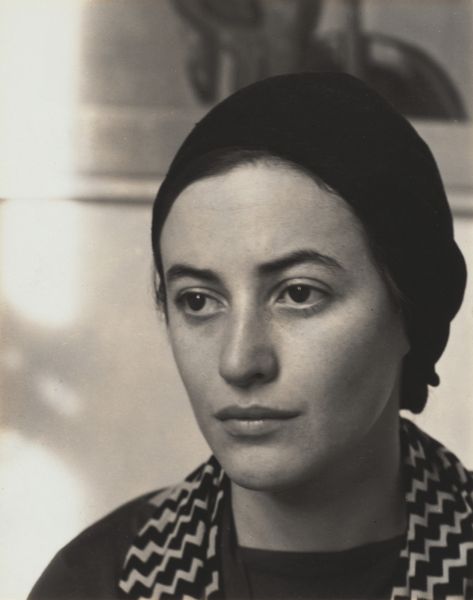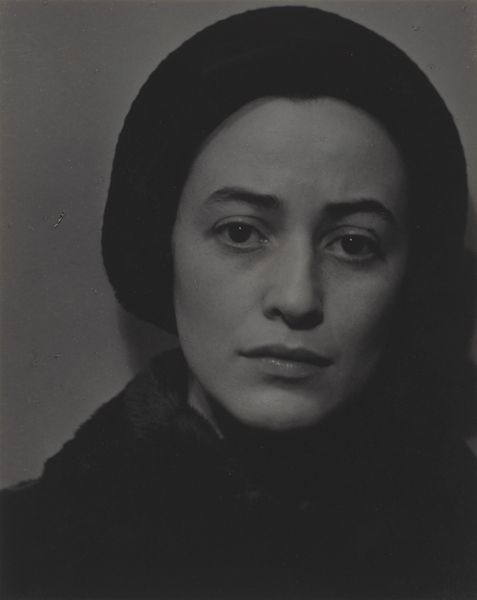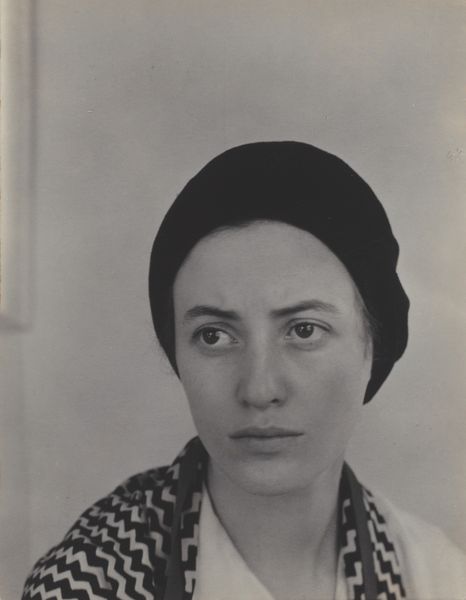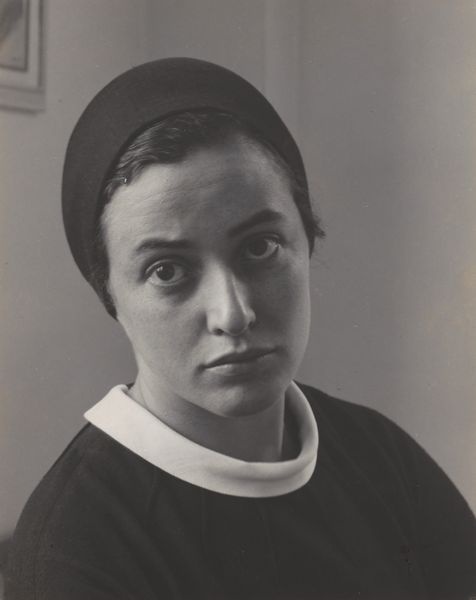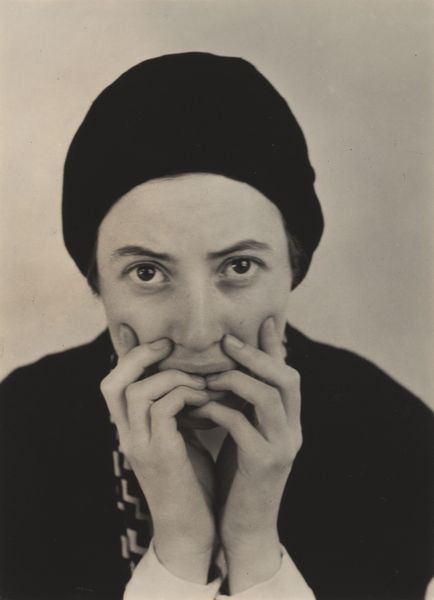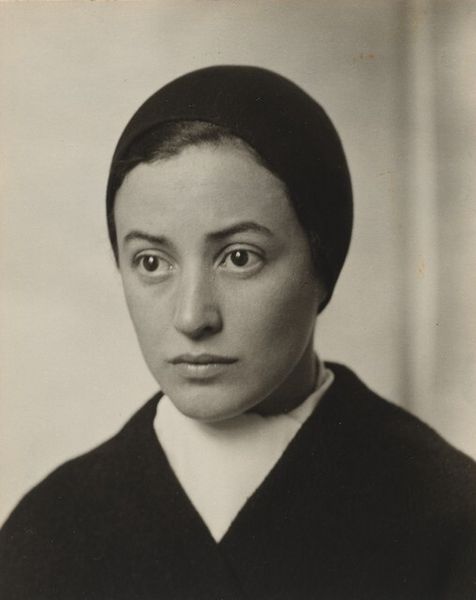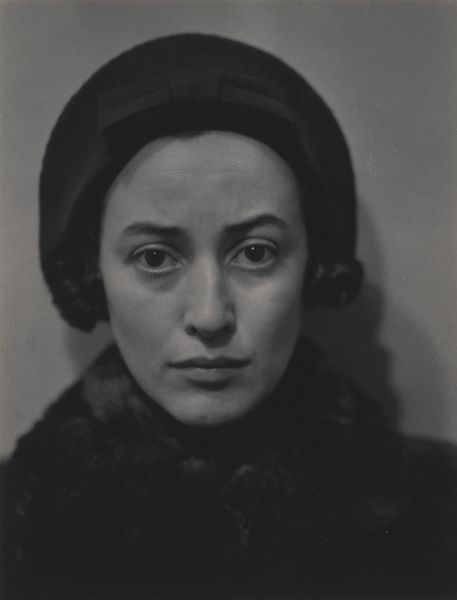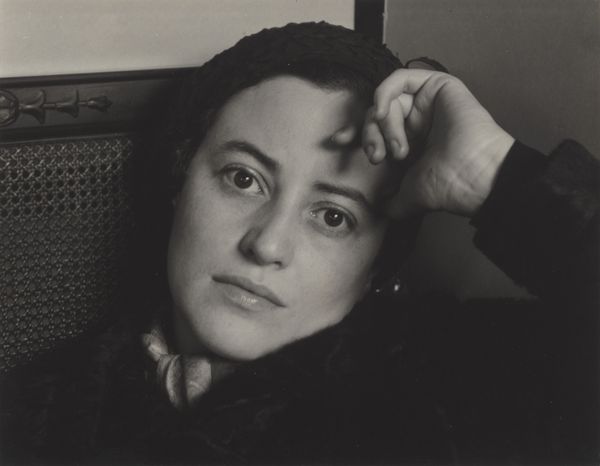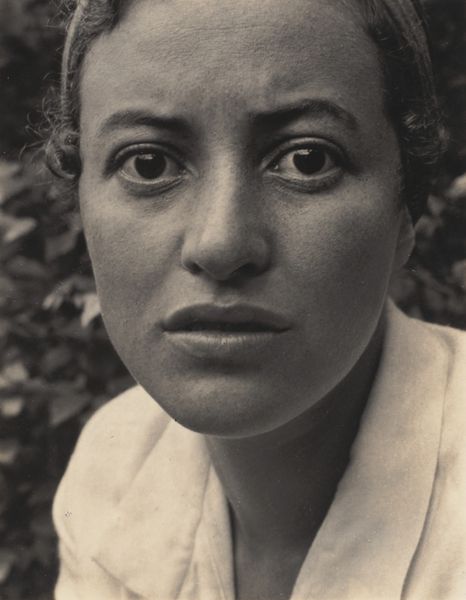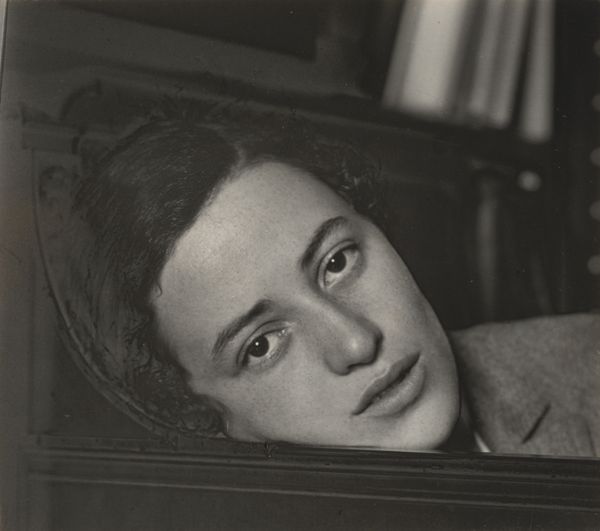
photography, gelatin-silver-print
#
portrait
#
portrait image
#
archive photography
#
photography
#
historical photography
#
black and white
#
single portrait
#
gelatin-silver-print
#
modernism
Dimensions: sheet (trimmed to image): 11.3 × 9.1 cm (4 7/16 × 3 9/16 in.) mount: 34.8 × 27.6 cm (13 11/16 × 10 7/8 in.)
Copyright: National Gallery of Art: CC0 1.0
Curator: Here we have Alfred Stieglitz's gelatin silver print, "Dorothy Norman," dating from 1930 to 1931. Editor: There’s an arresting stillness about it. The subject's gaze is direct and the monochrome palette really strips it down to its essential forms and textures. Curator: Indeed. Norman, who was more than just a subject; she was a complex figure—an artist, writer, and social activist deeply engaged in the intellectual circles of her time. This portrait isn't merely an image of her; it's a reflection of their collaborative dynamic. Editor: The way Stieglitz plays with light and shadow is particularly striking. Notice how the light emphasizes the curve of her cheek and brow, giving the image a sculptural quality. The patterned scarf provides a wonderful contrast to the smoothness of her skin and the stark background. Curator: That backdrop is key; Stieglitz often used his gallery, An American Place, as a backdrop, embedding his portraits within a specific artistic and social context. These images functioned as more than records. He made her into a symbol. Editor: I see your point. It’s almost as if Stieglitz is not just showing us Norman, but also showing us how *he* sees her and, by extension, the era’s aspirations for modern womanhood. Curator: Exactly. The choice of photography itself—a medium still finding its place in the fine arts—is a statement. Stieglitz was pushing photography to be seen as an equal to painting and sculpture. Editor: And Norman, as his subject, becomes part of that project. I still keep being drawn back to that graphic pattern, the scarf. It's a visual disruption but an eye-catching decision on Stieglitz’s part. Curator: I’d argue it roots the portrait in the present. It acts as a kind of disruptive element preventing the portrait from becoming an archetype. It adds depth to how Norman might be viewed outside Stieglitz’s gallery walls, and forces other social forces to have their say on its legacy. Editor: The portrait, then, becomes this layered encounter—between photographer and subject, art and social reform. It invites us to look closely, not just at Norman, but also at the ways in which photography itself was being defined and redefined. Curator: Precisely. Editor: Well, I won’t ever see gelatin silver prints the same way again.
Comments
No comments
Be the first to comment and join the conversation on the ultimate creative platform.
